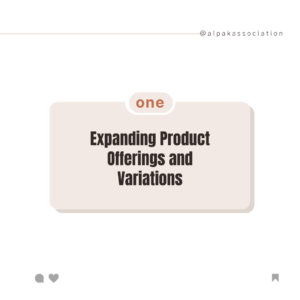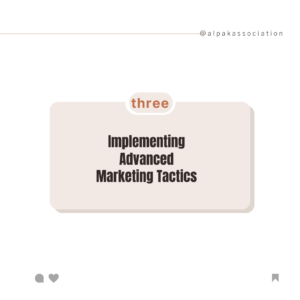Scaling Your Shopify Business: Advanced Strategies
Scaling your Shopify business beyond its current boundaries requires more than just incremental growth—it demands advanced strategies that can propel your brand to new heights. By implementing sophisticated tactics and leveraging the latest technologies, you can expand your reach, increase sales, and solidify your position in the e-commerce market. In this guide, we’ll explore advanced strategies for scaling your Shopify business and achieving sustainable growth.
1. Introduction to Scaling Your Shopify Business
Definition of business scaling
Scaling your Shopify business involves expanding operations, increasing revenue, and growing market share without a proportional increase in resources or costs. It’s about maximizing efficiency, optimizing processes, and unlocking new opportunities for growth to take your business to the next level.
Importance of advanced strategies for Shopify growth
Advanced strategies are essential for Shopify growth because they allow you to break through barriers, overcome challenges, and capitalize on emerging trends in the e-commerce landscape. By embracing innovation and adopting cutting-edge techniques, you can stay ahead of the competition and position your business for long-term success.
2. Expanding Product Offerings and Variations

Diversifying product categories
Expand your product offerings by diversifying into new categories or niches that complement your existing offerings. Conduct market research to identify profitable opportunities and align new products with customer demand and preferences.
Introducing product variations and bundles
Offer product variations, bundles, and kits to cater to different customer needs and preferences. Create value-added packages that combine complementary products or offer customization options to enhance the shopping experience and increase average order value.
Exploring dropshipping and print-on-demand options
Explore dropshipping and print-on-demand models to expand your product catalog without the need for upfront inventory investment. Partner with third-party suppliers or manufacturers to fulfill orders on-demand and offer a wider range of products to your customers.
3. International Expansion and Multichannel Selling

Targeting new markets and demographics
Identify new markets and demographics to target with your products and marketing efforts. Expand into international markets by localizing your website, content, and marketing campaigns to resonate with diverse audiences worldwide.
Integrating with international shipping and fulfillment services
Integrate with international shipping and fulfillment services to streamline the logistics of selling globally. Partner with fulfillment providers or logistics companies that offer reliable and cost-effective solutions for shipping products to customers worldwide.
Selling on multiple online marketplaces and social media platforms
Diversify your sales channels by selling on multiple online marketplaces and social media platforms. Leverage platforms like Amazon, eBay, Etsy, and Facebook Marketplace to reach new audiences and drive additional sales outside of your Shopify store.
4. Implementing Advanced Marketing Tactics
Utilizing data-driven marketing strategies
Harness the power of data to inform your marketing strategies and decision-making processes. Use analytics tools to gather insights about customer behavior, preferences, and trends, and use this information to optimize your marketing campaigns for maximum effectiveness.
Leveraging marketing automation and personalization
Implement marketing automation tools and workflows to streamline your marketing efforts and deliver personalized experiences to your customers. Use email automation, segmentation, and dynamic content to send targeted messages and offers based on individual preferences and behaviors.
Investing in influencer marketing and strategic partnerships
Collaborate with influencers, brand ambassadors, or strategic partners to amplify your marketing reach and credibility. Partner with influencers who resonate with your target audience and can help promote your products authentically to their followers.
5. Optimizing Operations and Logistics
Streamlining inventory management and fulfillment processes
Optimize your inventory management and fulfillment processes to ensure efficient operations and timely order fulfillment. Use inventory management software to track stock levels, forecast demand, and automate reorder processes to avoid stockouts or overstock situations.
Implementing advanced analytics and reporting tools
Utilize advanced analytics and reporting tools to gain deeper insights into your business performance and identify areas for improvement. Monitor key metrics such as sales, profitability, customer acquisition costs, and customer lifetime value to make data-driven decisions and optimize your strategies.
Investing in scalable infrastructure and technology solutions
Invest in scalable infrastructure and technology solutions that can support your business growth and expansion. Upgrade your e-commerce platform, invest in cloud-based systems, and adopt automation tools to streamline operations, improve efficiency, and accommodate increased demand.
6. Enhancing Customer Experience and Loyalty
Offering personalized shopping experiences
Deliver personalized shopping experiences to your customers by tailoring product recommendations, promotions, and content based on their preferences and past interactions. Use data-driven personalization techniques to create targeted messages and offers that resonate with individual shoppers.
Implementing loyalty programs and rewards
Implement loyalty programs and rewards to incentivize repeat purchases and foster long-term customer loyalty. Offer rewards points, discounts, or exclusive perks to encourage customers to engage with your brand regularly and become advocates for your products.
Providing exceptional customer service and support
Deliver exceptional customer service and support to build trust and loyalty with your customers. Offer multiple channels for customer support, including live chat, email, and phone support, to address inquiries and concerns promptly. Train your support team to provide knowledgeable and helpful assistance and strive to exceed customer expectations at every touchpoint.
7. Conclusion
Scaling your Shopify business requires a combination of strategic planning, innovative thinking, and relentless execution. By implementing advanced strategies across product expansion, internationalization, marketing, operations, and customer experience, you can unlock new growth opportunities and take your business to new heights. Continuously evaluate and iterate on your strategies to stay ahead of the curve and maintain a competitive edge in the ever-evolving e-commerce landscape.
FAQs (Frequently Asked Questions)
- What are the main challenges of scaling a Shopify business?
- Some common challenges of scaling a Shopify business include managing inventory and logistics, optimizing operations for efficiency, maintaining consistent product quality and customer service standards, and competing with larger, more established competitors.
- How can I determine if my Shopify business is ready for scaling?
- You can assess the readiness of your Shopify business for scaling by evaluating key performance indicators (KPIs) such as revenue growth, profit margins, customer acquisition costs, repeat purchase rates, and operational efficiency. Look for signs of sustainable growth and scalability, such as consistent sales growth, healthy profit margins, and streamlined operations.
- What role does technology play in scaling a Shopify business?
- Technology plays a crucial role in scaling a Shopify business by enabling automation, streamlining operations, improving efficiency, and enhancing the customer experience. Invest in scalable infrastructure, e-commerce platforms, automation tools, and analytics solutions to support your growth objectives and drive success.
- How can I finance the scaling of my Shopify business?
- Financing options for scaling a Shopify business may include reinvesting profits, securing loans or lines of credit, seeking investment from venture capitalists or angel investors, crowdfunding, or strategic partnerships. Evaluate the pros and cons of each option and choose the one that aligns with your growth strategy and financial goals.
- What are some potential risks associated with scaling a Shopify business?
- Some potential risks of scaling a Shopify business include overextending resources, losing focus on core competencies, compromising product quality or customer service standards, facing increased competition, and encountering unexpected market or economic downturns. Mitigate these risks by conducting thorough planning, monitoring performance closely, and staying agile in response to changing circumstances.

